Mediterranean seabirds include the Mediterranean Shearwater (Puffinus yelkouan), the Mediterranean Corey's Shearwater (Calonectris diomedea), the Great Northern Gannet (Morus bassanus), the European Cormorant (Gulosus aristotelis) and the Yellow-legged Gull (Larus michahellis), among many others.
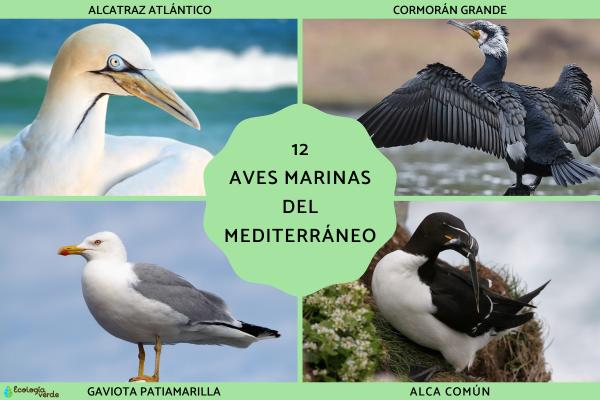
Yelkouan Shearwater
Scopoli’s Shearwater
Northern Gannet
Great Cormorant
European Shag
Audouin’s Gull
Yellow-legged Gull
Sandwich Tern
Razorbill
Red-breasted Merganser
European Storm-petrel
Parasitic Jaeger
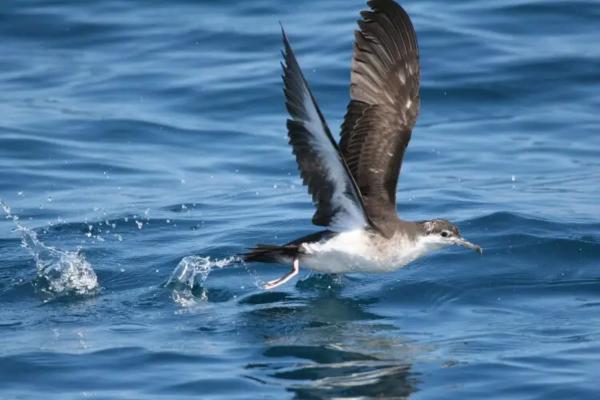
The Yelkouan Shearwater is a medium-sized seabird endemic to the Mediterranean. It breeds in noisy colonies on rocky islands and feeds on fish, cephalopods, and fishery discards. Known for its long lifespan, it has a low reproductive rate, laying just a few eggs per year.
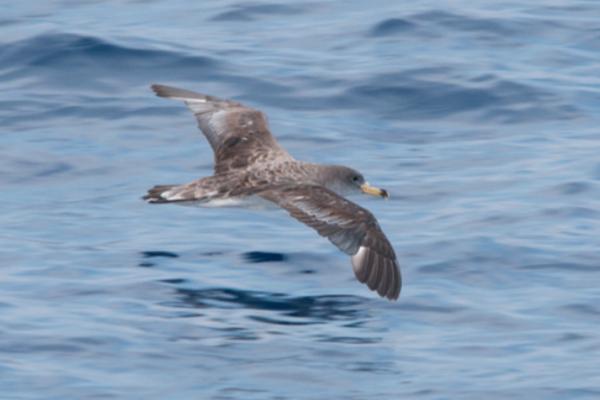
Scopoli’s Shearwater is a large pelagic seabird breeding around the Mediterranean and wintering off West Africa. It preys on small fish, cephalopods, and crustaceans, often following fishing boats. Nests are built in caves on islands, with just one white egg laid each year.
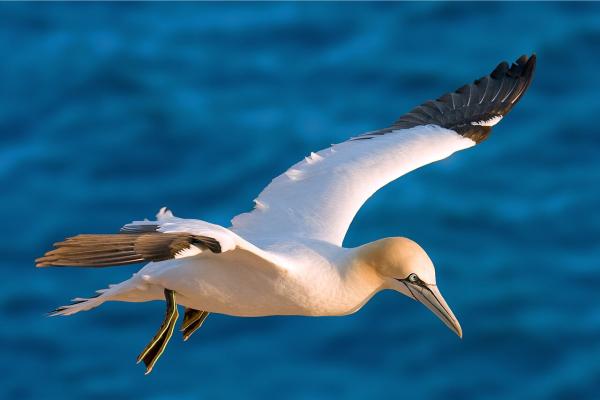
The Northern Gannet is one of the largest seabirds to visit the Mediterranean, especially in winter. It is white with a yellowish head, diving from great heights to catch fish. Gannets return to the same nesting colonies annually, producing only one chick per year.

A winter visitor to the region, the Great Cormorant has dark plumage and white patches on the face and throat. Its long neck and prominent bill make it an expert fish hunter. They are often seen drying their less-waterproof feathers while perched on rocks or logs.
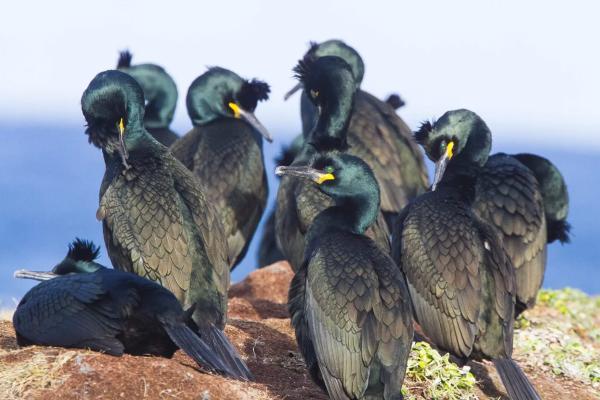
The European Shag is smaller and more slender than the Great Cormorant, found on rocky, inaccessible Mediterranean coasts. Population declines are due to overfishing, pollution, and fishing net accidents.
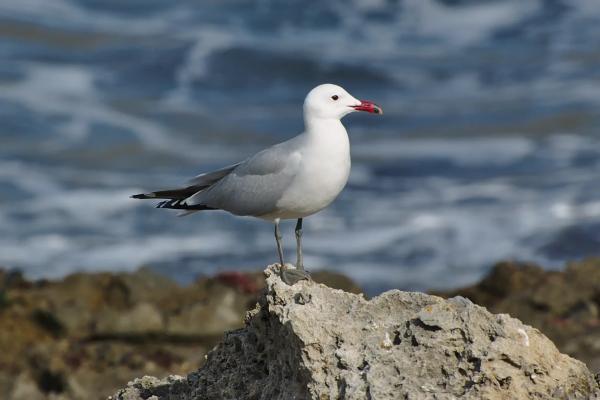
Endemic and rare, Audouin’s Gull nests on remote rocky islands, especially in the Ebro Delta. Its diet is mainly pelagic fish and both terrestrial and marine invertebrates. This species prefers quiet areas away from urban centers.
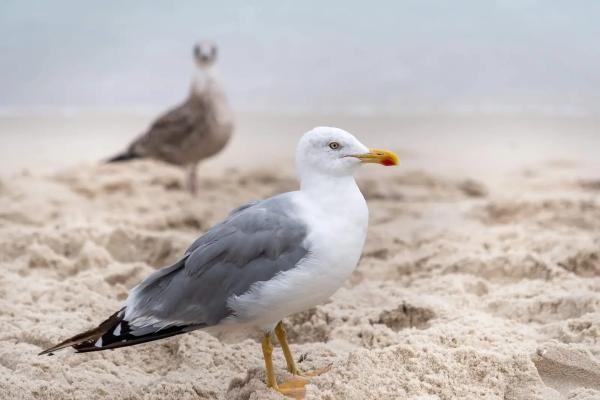
The Yellow-legged Gull is the largest and most abundant gull in the Mediterranean, with strong adaptability. It inhabits a range of habitats from marshes and wetlands to cities and open sea, and is an opportunistic feeder.
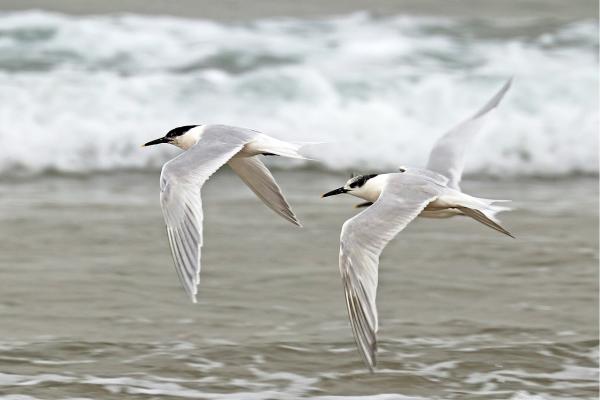
The Sandwich Tern is one of the most common terns in the region, forming dense and noisy breeding colonies. They are skilled at plunge-diving from 10–15 meters to catch medium-sized fish and are fully migratory.

Razorbills are black and white seabirds, with a distinctive white line from the eye to the beak. Found mainly in northern Europe and along France and Britain’s coasts, they breed on cold, rocky cliffs and are agile underwater fish hunters.
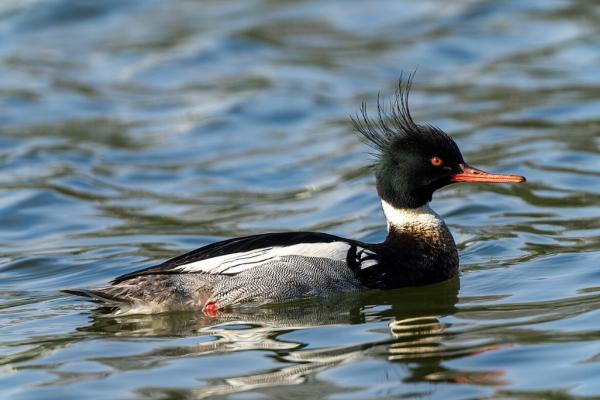
This species is easily recognized by its shaggy crest and sexual dimorphism. Red-breasted Mergansers breed in mountainous and coastal vegetated areas, feeding mainly on salmon, perch, and carp.
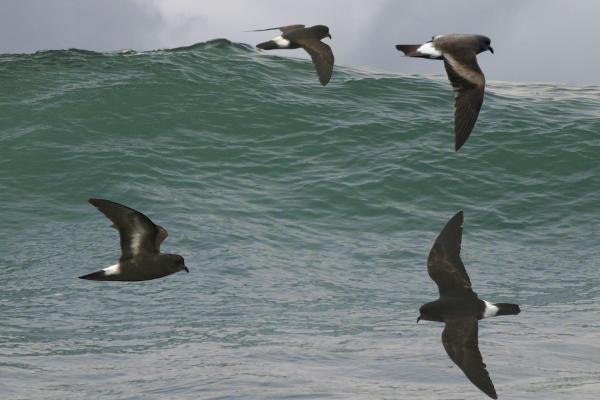
The smallest seabird in Europe, the European Storm-petrel is dark, fast, and agile in flight, skimming the ocean’s surface for small crustaceans, cephalopods, and jellyfish. It nests in inaccessible rocky sites and lays just one egg per year.
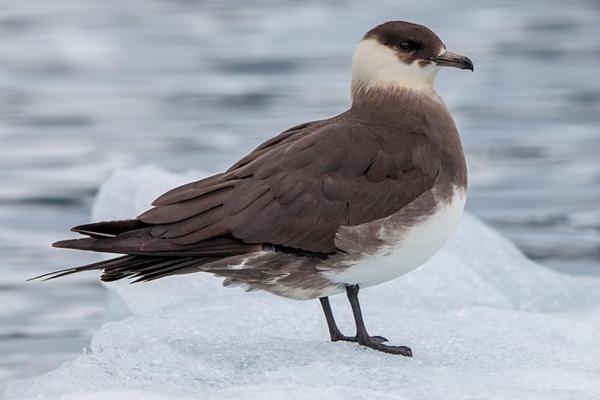
The Parasitic Jaeger resembles a gull but has pointed wings and a hooked bill. Highly migratory, it is known for its kleptoparasitic habits—harassing other seabirds to steal their food—and fiercely defends its Arctic tundra or grassland nests.
These 12 seabird species are vital to the Mediterranean ecosystem and showcase the region’s unique biodiversity. Protecting these birds and their habitats is crucial for the health of Mediterranean marine environments.
animal tags: Mediterranean Seabirds
We created this article in conjunction with AI technology, then made sure it was fact-checked and edited by a Animals Top editor.